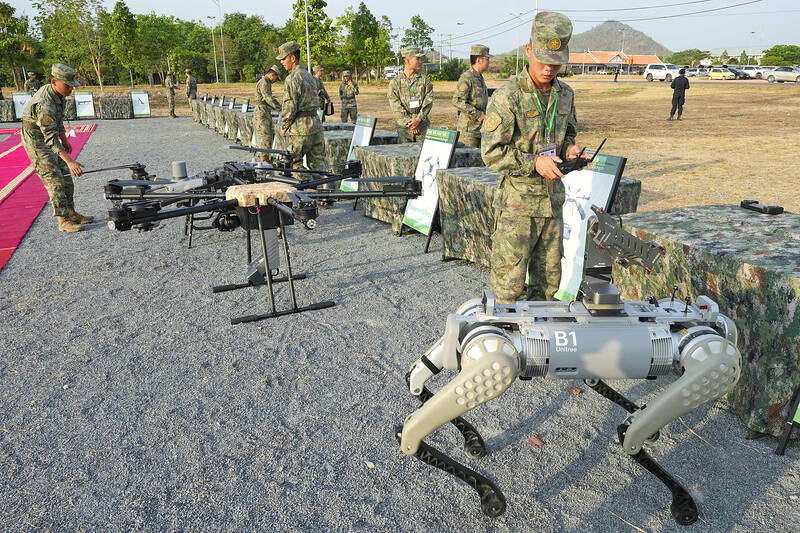- Arvind's Newsletter
- Posts
- Arvind’s Newsletter
Arvind’s Newsletter
Issue No #1124
1.The South West Monsoon set over Kerala on Thursday:IMD
The monsoon set in over Kerala on Thursday, two days ahead of its normal date, and has advanced into most parts of Northeast India, according to the India Meteorological Department (IMD).
Weather scientists said cyclone Remal, which swept through West Bengal and Bangladesh on Sunday, redirected the monsoonal flow towards the Bay of Bengal, potentially contributing to the early onset of the monsoon over the northeast.
Kerala has been receiving heavy rains for the past few days, resulting in a surplus May rainfall, according to weather office data.
2.PSU stocks soar to seven-year high in market-cap constituting 16% of listed universe
While there are some concerns about valuations, the overall sentiment remains positive, driven by strong fundamentals, healthy order books, and improving performance metrics.
The share of public sector companies in India's total stock market capitalization has soared to a seven-year high of over 16 percent in May, driven by a strong rally in state-owned companies. This surge is a significant rise from the low of 7.8 percent in October 2020, doubling since then, and stands in contrast to the peak of 29 percent in February 2009.
Neeraj Chadawar, Head of Fundamental and Quantitative Research at Axis Securities, highlighted that with more PSU firms listed, including major players like LIC, there's optimism for further growth with stable political and policy continuity. He noted, "Healthy fundamentals and reduced government intervention have boosted confidence in PSU stocks, leading to positive sentiment and rerating."
3.The second coming of Bharti Airtel: It’s market cap crosses $100 bn; Sunil Mittal interview in ET
Airtel is the first first-generation Indian company to hit the $100-billion milestone. I saw Kumar (Mangalam) Birla say last week that the group’s m-cap had crossed the $100-billion mark. But then there are multiple companies in the group, also not first generation. Then there is Reliance, which is of course a single company which in a sense drives the industry, but it’s a second generation one. And there is HDFC and the Tatas which are multi-generational companies. There are only a handful of telecom companies in the world to have achieved this feat— Verizon, AT&T, T-Mobile, China Mobile and us.”
“Especially after the 2016 disruption and the AGR (adjusted gross revenue) ruling (of October 2019), and then to come back from there is big... We were down to $19 billion market cap (in 2019), which was lower than the money put in. But within 5 years, the company has added $80 billion. I started in 1976, when I was 18, selling bicycle parts. That was the first business in the family. And in 1992, when I bid for the mobile licence, I was 34 and now I am 66. It’s been a long journey, but an interesting one. Telecom has been consuming my last three decades and of course, Africa.”
“September 2016 was the Jio launch and 2018 was the time when I think the industry was in the most distress… Ebitda had crashed due to the free services. We had to keep going down (in terms of tariffs). Then the first losses started at that time after many years and debt was pretty high. So the company was shaky. And in March 2018, I still recall that you could sense a concern among the rank and file of the company. You could see it on the faces of professionals working at Airtel. Company after company was folding up — Tatas selling to us, three companies going into NCLT. And that was the time that the regulatory hits started to bother me. Regulations, which were coming one after the other, were disturbing. And then in September 2018, I sought a meeting with the Prime Minister… that was the turning point.”
“And then in 2018, I sought a meeting with the PM. I was still the chairman of GSMA… just coming out from the chairmanship of the International Chamber of Commerce, when I used to brief him (PM) occasionally on WTO, G20 and other issues. So, I took his permission to talk about the Indian telecom industry. I told him that things were very bad and the situation was getting very alarming. I said I will fight in the marketplace, but I can’t fight the government… we spoke in Hindi. He told me that this government will not tilt towards either side. Whatever is good for the country will be done. You fight in the marketplace... I don’t have a view on that. But you can be sure that the government will not take sides.”
“That was enough for me. I got up and I thanked him, and said, “I will fight in the market”. This was the turning point. And to my mind, lot of statements that this government is only favouring a few is misplaced. This $100-billion market cap is a testimony to what India is today, not just my company.
Money is pouring into this country, a lot of capital is coming in, investments are coming in, the stock market is rising. These massive valuations are a function of a stable, solid, functional economy under a very solid leader.”
4.China shows off its robot ‘dogs of war’ in Cambodia
Last week, Agence France-Presse reported that China had the gun-carrying robodogs in a 15-day joint military exercise with Cambodia dubbed the "Golden Dragon."
And if images of the literal killing machines weren't troubling enough, a new video of the robots released yesterday by the state-owned broadcaster China Central Television shows the killing machine dutifully hopping and diving, leading teams in reconnaissance, and shooting its back-strapped machine gun at targets.
"It can serve as a new member in our urban combat operations," says a soldier featured in the two-minute clip, "replacing our members to conduct reconnaissance and identify [the] enemy and strike the target."
According to the report, the quadrupedal robodogs — specifically, the China-based robotics firm Unitree's $2800 Go2 models -can "operate" on their own from anywhere between two and four hours.
In short, the modern, automation-driven military landscape is here. And, yes, it's terrifying.
5.Smart bandages” that detect how wounds are healing and allow doctors to remotely treat injuries could represent the next wave of wearable technology.
Prototypes of the bandages — fuelled in part by $55 million in US government funding for wound-healing biotech development — use electronic circuitry to transmit signals on how injuries are healing; some can zap wounds with electricity, The Wall Street Journal reported. Researchers in China and Europe are also working on the devices, which are still in testing and far from replacing gauze and latex. “We kind of are practicing medieval medicine in wound care. It’s a lot of poultices and salves,” said one doctor who is developing a smart bandage.
6.Deadly turbulence on a Singapore Airlines flight was caused by rapid changes in gravity:
A deadly “turbulence event” aboard a Singapore Airlines flight last week was preceded by rapid changes in gravitational forces observed by the plane’s flight data recorder, the Singapore Ministry of Transport said in a report Wednesday. The incident, which happened on an older-model Boeing 747-300, injured 104 passengers and left one dead.
The flight, which had been traveling from London’s Heathrow Airport to Singapore, was traveling over Myanmar when it experienced a shift from 0.44G to 1.57G. The plane started to shake, then climbed “uncommanded” by hundreds of feet. When the plane’s autopilot took the plane back down to its preferred 37,000-foot altitude, the plane sped up and forced the pilots to put on an air brake.
7.The Growing Importance of Desalination
About 71% of the Earth is covered in water. While most of that water is found in the ocean, about 2.5% of it is freshwater, which can be used to drink or irrigate crops. However, as climate change begins introducing erratic weather patterns, resulting in lower rain and snowfall, thinner rivers, and drier lakes, the availability of freshwater required to sustain a growing population is becoming a matter of urgent concern.
Today, there are increasing worries that many communities are at risk of losing access to fresh water. There are already 1.1 billion people dealing with water scarcity, and up to 2.7 billion people don’t have access to enough water for at least one month out of the year. Water scarcity has profound humanitarian and economic consequences. It’s not as simple as people simply dying of thirst; a lack of adequate fresh water can lead to declining food production. Another consequence of water scarcity is inadequate sanitation which can cause the spread of water-borne illnesses like cholera and typhoid fever.
The supply of available freshwater, already limited, may continue to decline in the future if droughts become more common. On the other hand, demand for freshwater is likely to continue to rise as the global population is projected to grow from 8 billion in 2023 to nearly 10 billion by 2050. Preventing widespread water insecurity will require a new source of freshwater supply.
Desalination is the process of converting the plentiful supply of saltwater in the world’s oceans and seas into usable freshwater. Some countries, notably those in the Middle East, are already relying on desalination to supply the lion’s share of their drinking water. Others, like the US, have yet to scale desalinated water production. However, with renewable energy sources like solar and nuclear making energy cheaper and more abundant, alongside desalinating technology becoming more efficient, desalination is likely to become an ever more important source of water around the globe.
New "smart" antibiotic targets a group of gram-negative bacteria—those most likely to turn into drug-resistant superbugs—without affecting the microbiome






